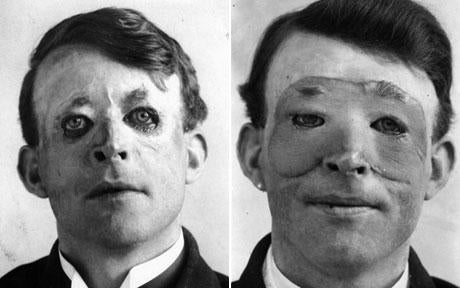The Evolution of Plastic Surgery
Listen 48:58
During World War I, thousands of soldiers suffered catastrophic facial injuries. If these soldiers survived their injuries, they were often shunned once they got back home.
Some were forced to sit on brightly painted blue benches so that the public knew not to look at them. Many became isolated — sometimes their fiancées broke off their engagements, or their families rejected them — and came to feel that their lives were no longer worth living.
But then an enterprising surgeon entered the picture, who was determined to repair and even rebuild these men’s injured faces: Harold Gillies.
On this episode, we talk with medical historian Lindsey Fitzharris about her new book “The Facemaker: A Visionary Surgeon’s Battle to Mend the Disfigured Soldiers of World War I,” which traces Gillies’ pioneering mission to reconstruct faces. We hear about how he gathered artists, radiographers, dental surgeons, and more for novel collaborations, their miraculous results, and how Gillies’ efforts led to the birth of modern reconstructive surgery.
Also heard on this week’s episode:
- From the 1960s to the late ’80s, countless people who were incarcerated were given plastic surgery in the hopes that improved looks could reduce recidivism. Reporter Jad Sleiman tells the strange story of this experiment and talks with a famous plastic surgeon to the stars about this flawed program.
- Flight nurse Dave Repsher lived an active life — until a medical helicopter he was riding in crashed, resulting in Repsher suffering burns on over 90 percent of his body. Colorado Public Radio’s Ryan Warner tells the story of Repsher’s difficult recovery using cutting-edge techniques.
WHYY is your source for fact-based, in-depth journalism and information. As a nonprofit organization, we rely on financial support from readers like you. Please give today.






